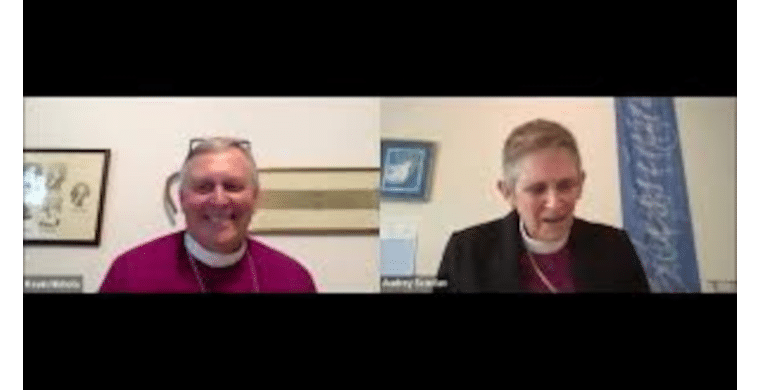On October 19, 2024, representatives and clergy of the Diocese of Bethlehem, and the Diocese of Central Pennsylvania, will gather at State College, PA in an agreed upon joint convention of both dioceses. On the agenda is a proposal that the two dioceses re-unite and become one after 100 years of separation.
Subsequently, both groups will vote separately to unite, or remain as one. If the vote is passed by both bodies an agreement will be drawn up for the birth of a new diocese — The Diocese of the Susquehanna. There will then be a year of transition during which time both bishops, Audrey Scanlon and Kevin Nichols, will remain in place in their respective dioceses.
In 2026, the two dioceses will then become “The Diocese of Susquehanna”. At this stage, both bishops will continue to serve, one as bishop diocesan, and the other as assistant. Also, during the transition nine committees will be at work dealing with Constitutions, Finances, Diocesan Staff, Commissions on ministry, Convocations, and other departments.
The vote to agree on re-unification will be the beginning of a long process that will attempt to dovetail the business and ministry of both dioceses. A ‘Re-unification Discernment Committee,’ with members from both dioceses will study the possibilities. Their recommendation is expected to be a firm ‘yes’.
Such a reunification is pursuant to the Agreement of Union and Canon 1.10.6 of the Constitutions and Canons of the General Convention of the Episcopal Church. Such an agreement would come into effect on January 1, 2026.
The two Pennsylvania dioceses, are not unique in their quest for re-unification.
This has been happening in other states. Michigan being a recent example. Newly elected Presiding Bishop Sean Rowe, while still chair of the House of Bishops, participated in the twinning of several dioceses. First, Bethlehem with the Diocese of Erie and later Erie with the Diocese of Central New York.
The crisis in the decline of church attendance since Covid has hastened this process, a source told VOL. “The Diocese of Bethlehem set in place convocations, or parishes, grouped together geographically. The idea was that small churches could and should help one another and pool their resources. This has been enormously successful, suggesting that with a larger reunified diocese, cooperation at a local level will be of paramount importance.”
Besides the continued work of the Convocations across the Diocese, the new diocese will have four geographical areas, each with its own cathedral or primary church. This effort is seen as a positive move within the Episcopal Church, and has received total backing from church members.
Reprinted with permission from VirtueOnline. Original here.


Leave a Reply